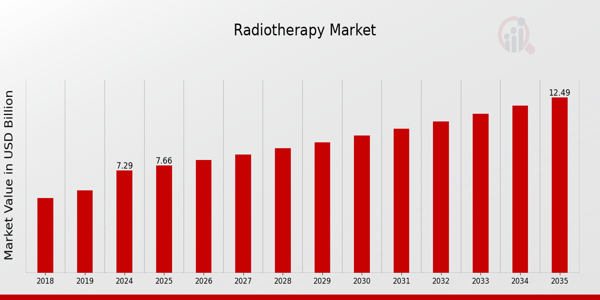Genres:Artbook
🇬🇧English
< 30 votes
0 votes
5
00.0%4
00.0%3
00.0%2
00.0%1
00.0%The cardiovascular ultrasound market is undergoing a significant transformation, driven by advancements in imaging technology, growing awareness of heart health, and an increasing global burden of cardiovascular diseases (CVDs). Also known as echocardiography, cardiovascular ultrasound is a widely used diagnostic tool that employs sound waves to create real-time images of the heart, offering clinicians valuable insights into cardiac function, structure, and blood flow without the risks associated with invasive procedures.
Market Drivers and Trends
One of the primary drivers for the cardiovascular ultrasound market is the rising prevalence of heart-related conditions. As lifestyles become more sedentary and risk factors such as obesity, hypertension, and diabetes become more widespread, the demand for accurate, accessible, and safe diagnostic tools has surged. Cardiovascular ultrasound meets these demands by providing quick, radiation-free imaging that is cost-effective compared to other diagnostic modalities like CT or MRI.
One of the primary drivers for the cardiovascular ultrasound market is the rising prevalence of heart-related conditions. As lifestyles become more sedentary and risk factors such as obesity, hypertension, and diabetes become more widespread, the demand for accurate, accessible, and safe diagnostic tools has surged. Cardiovascular ultrasound meets these demands by providing quick, radiation-free imaging that is cost-effective compared to other diagnostic modalities like CT or MRI.
Technological advancements have also played a key role in market expansion. Modern ultrasound systems are now equipped with 3D and 4D imaging capabilities, AI-assisted diagnostics, and portable configurations. These enhancements have not only improved diagnostic accuracy but also expanded the utility of ultrasound across different healthcare settings—from large hospitals to remote clinics and even home care environments.
Handheld and portable devices have especially gained traction post-COVID-19, as healthcare providers prioritize tools that offer flexibility and minimal patient exposure. Manufacturers are responding by launching compact systems that maintain high image quality while allowing for greater mobility and point-of-care diagnostics.
Market Segmentation
The cardiovascular ultrasound market is typically segmented by technology (2D, 3D/4D, Doppler), type (transthoracic, transesophageal, stress echocardiography, fetal echocardiography), and end-user (hospitals, diagnostic centers, ambulatory care settings). Among these, transthoracic echocardiography remains the most common due to its non-invasive nature and broad diagnostic application.
The cardiovascular ultrasound market is typically segmented by technology (2D, 3D/4D, Doppler), type (transthoracic, transesophageal, stress echocardiography, fetal echocardiography), and end-user (hospitals, diagnostic centers, ambulatory care settings). Among these, transthoracic echocardiography remains the most common due to its non-invasive nature and broad diagnostic application.
In terms of technology, 3D and 4D imaging are experiencing rapid adoption, as they provide more detailed views of cardiac anatomy and are especially valuable in complex cases and pre-surgical planning. Doppler ultrasound also continues to be widely used, particularly in evaluating blood flow and detecting blockages or valve issues.
Regional Insights
Geographically, North America dominates the cardiovascular ultrasound market, fueled by advanced healthcare infrastructure, higher healthcare spending, and robust research activities. However, the Asia-Pacific region is emerging as a significant growth area. Factors such as a growing aging population, increasing incidence of CVDs, and expanding access to healthcare services are contributing to rising demand across countries like China, India, and Japan.
Geographically, North America dominates the cardiovascular ultrasound market, fueled by advanced healthcare infrastructure, higher healthcare spending, and robust research activities. However, the Asia-Pacific region is emerging as a significant growth area. Factors such as a growing aging population, increasing incidence of CVDs, and expanding access to healthcare services are contributing to rising demand across countries like China, India, and Japan.
Challenges and Opportunities
While the market outlook is positive, challenges such as reimbursement issues, a shortage of trained sonographers, and high initial costs for advanced systems can hinder adoption. However, these are increasingly being offset by innovations in AI-powered image analysis, which simplifies interpretation and reduces the burden on specialists.
While the market outlook is positive, challenges such as reimbursement issues, a shortage of trained sonographers, and high initial costs for advanced systems can hinder adoption. However, these are increasingly being offset by innovations in AI-powered image analysis, which simplifies interpretation and reduces the burden on specialists.
Views
Total: 0/360 days: 0/180 days: 0/90 days: 0/30 days: 0/7 days: 0/24 hours: 0/12 hours: 0/6 hours: 0/60 minutes: 0
MPark Page Creation
U.1283332 at GMT
Chapters
Reviews(0)
Comments(0/0)
MPLists(0)
